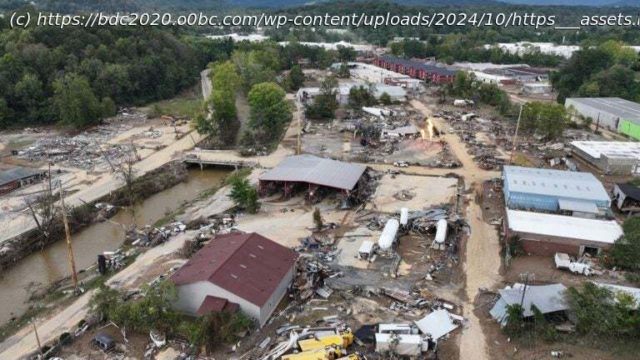Across seven affected states, only 0.8 percent of homes in inland counties affected by the storm had flood coverage.
In Buncombe County, N.C., where an entire town disappeared beneath floodwaters, less than 1 percent of households had flood insurance. In Unicoi County, Tenn., where dozens of residents were stranded atop a hospital roof as waters rose, it was under 2 percent.
On average, just a tiny fraction of households in the inland counties hit hardest by Hurricane Helene and its remnants had flood insurance, according to a analysis of recent data from the National Flood Insurance Program. Across seven affected states, only 0.8 percent of homes in inland counties affected by the storm had flood insurance. By contrast, 21 percent of homes in coastal counties in those areas had coverage.
The Post estimated the share of homes with flood insurance by using policy counts as of Oct. 1 provided by the Federal Emergency Management Agency and housing unit counts from the US Census Bureau.
Experts say that lack of insurance will prove deeply damaging for those households in the years to come, adding to the overall toll of the devastating storm. So far, there have been at least 213 deaths confirmed in six states as of Thursday. Available disaster assistance funds are largely intended to pay for temporary shelter, food and water — not to rebuild homes. And thanks to a combination of outdated policies and high prices, most people don’t know they should enroll in flood insurance — or can’t afford it.
Without insurance, people struck by floods have to rely on a network of complicated federal programs or aid from nonprofits to rebuild their lives. The Individual Assistance Program, run by FEMA, can help provide urgent resources but is capped at around $42,500 for housing and $42,500 for other costs. Most recipients get far less. As of Thursday morning, FEMA listed 108 counties in five states where people are eligible for this aid.
“It’s something people don’t want to think about,” said Craig Landry, a professor of agricultural and applied economics at the University of Georgia, of the risk of catastrophic flooding. “People have an optimistic perception of disaster assistance,” he added. “And in reality, it’s not that generous.”
The Post’s analysis shows that many of the counties affected by Helene’s flooding have seen declining rates of flood insurance coverage in the past decade. In some cases, around half of flood insurance policies have been dropped.
Stephanie Buchanan, a resident of Bakersville, N.C., didn’t know she didn’t have flood insurance until her belongings had been swept away in rising creek waters. Buchanan and her husband fled out the back door and watched the water rise 2 feet up into their home, ruining furniture and dragging their possessions into the garage.






